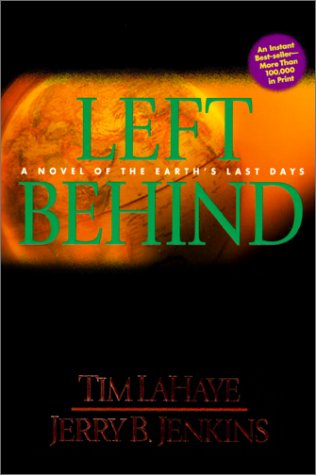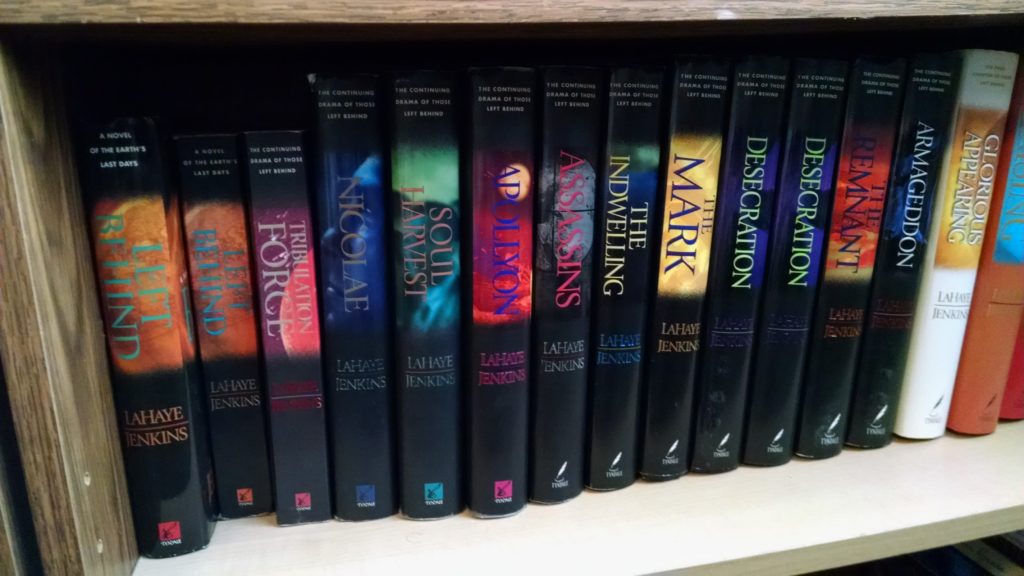Twelve Reasons The ‘Left Behind’ Series Is Actually Awesome, Part 3
If you came to read about how awful the Left Behind movie was, I touch on that today at Christ and Pop Culture. My intent there is not to run the movie into the ground (again), but to perform a postmortem on this cinematic tragedy. Over there I say:
Any adaptation of the novels could have been sincere about the series’ evangelical themes and its chosen genre, an accessible potboiler thriller. But the Left Behind movie had another aim: to sell itself. And not even as a movie, but as rapture-insurance.
When I saw the film’s quiet opening with gentle canned 1990s piano melodies and peaceful shots of a community airport, I could tell this wasn’t the world of the Left Behind novels — not even the first novel. Instead I was seeing an entirely alien universe.
Forty-some-odd minutes later, I was in a fetal position. The movie took all this time merely to introduce its versions of the characters in plodding methods that Left Behind novelist Jerry B. Jenkins would have never attempted even on a slow writing day. In five different ways the movie painstakingly told me what the first Left Behind novel easily accomplished in 11 words: “Rayford Steele’s mind was on a woman he had never touched.”
But like any fan of a fantastical novel series whose movie version(s) are terrible, I still have the books. And I still have my original reasons for why the books are actually awesome. That is, what the Left Behind series wants to be, it is with excellence: a series of evangelical-themed apocalyptic thriller novels that explores what-if speculations about an “end times.”
Oh, and by the way, the novels do way more than flash a few sentimental less-than-G-rated scenes of a sweet peaceful pre-rapture world and then show weeping folks. Even despite the novels’ sparse writing style, its creativity easily beats the movie, starting with this fact:
7. The cover images are boss
 We all say, “Never judge a book by its cover,” and we all do this anyway. The first Left Behind novel had a fairly boss cover. The fifth book Apollyon’s flaming lava pit (note: not actually seen in story) kicked it up a notch for the series’ later volumes. I haven’t seen many Christian novels — even the fantastical stuff — with covers that are this boldly designed.
We all say, “Never judge a book by its cover,” and we all do this anyway. The first Left Behind novel had a fairly boss cover. The fifth book Apollyon’s flaming lava pit (note: not actually seen in story) kicked it up a notch for the series’ later volumes. I haven’t seen many Christian novels — even the fantastical stuff — with covers that are this boldly designed.
The Indwelling has a creepy dead body on front. The Mark features a microchip-like surface and sinister eye. An Antichrist-like silhouette cameos a third time on Desecration, followed by The Remnant’s desert wasteland and Armageddon’s stylized horses.
 All these are cast in variant colors over the series’ uniform black-matte surface. But as I had previously hoped, the final novel Glorious Appearing switched to white shiny finish over black matte, with a gorgeous illustration of the glorified(?) planet Earth. It was a creatively excellent conclusion to the series’ 12 cover designs. And by the way, this showed that even the Left Behind series was really all about the actual wonderful second coming of Christ, Christians’ actual blessed hope.1
All these are cast in variant colors over the series’ uniform black-matte surface. But as I had previously hoped, the final novel Glorious Appearing switched to white shiny finish over black matte, with a gorgeous illustration of the glorified(?) planet Earth. It was a creatively excellent conclusion to the series’ 12 cover designs. And by the way, this showed that even the Left Behind series was really all about the actual wonderful second coming of Christ, Christians’ actual blessed hope.1
8. An epic series vision
Speaking of movies we won’t talk about here, I think people keep forgetting the actual point of the Left Behind series: the Tribulation, and Jesus Christ and his actual return.
Certain movies and evangelical tropes have ignored that vision entirely — particularly the actual-Second-Coming part. This conveys that the point of LB or its end-times teaching is to scare people about a “rapture” and/or sell rapture insurance so they won’t be left behind.
 But guess how much of the first novel actually focuses on the tragedy of the rapture itself, unmanned vehicles and all? Almost exactly 42 pages. The rest explores the consequences of being left behind while hastening quickly to set things up for the Antichrist and Tribulation. That’s seven years of material to cover. And sure, you may disagree that the series did its own premise justice.2 But that is an epic vision for any author(s), evangelical or not: to explore seven years’ worth of story complete with a global dictatorship, plagues, several different levels of dystopia; and accessible pre, mid–, and post–apocalyptic speculation.
But guess how much of the first novel actually focuses on the tragedy of the rapture itself, unmanned vehicles and all? Almost exactly 42 pages. The rest explores the consequences of being left behind while hastening quickly to set things up for the Antichrist and Tribulation. That’s seven years of material to cover. And sure, you may disagree that the series did its own premise justice.2 But that is an epic vision for any author(s), evangelical or not: to explore seven years’ worth of story complete with a global dictatorship, plagues, several different levels of dystopia; and accessible pre, mid–, and post–apocalyptic speculation.
I doubt even an astronomically high-budget film series could do that vision justice. Perhaps this is why it’s audacious for any movie even to feign an attempt. Such an effort will always get stuck barely hours or months after a “rapture.” (Imagine making a version of The Hobbit that never even exits Bilbo Baggins’s front door — or for that matter, his sitting-room.)
Since the LB novel series, has any other fantastical fiction attempted such a vision? Again, I’m not saying all the novels fulfill this premise. I’m only saying: the goal was impressive.
9. Characters are ethnically diverse
If you say the LB series is boring to read, is creatively subpar, or explores wrong end-times beliefs, we will likely have an argument that you’ve half already won. But let’s not have any nonsense about how the books are only about white middle-class evangelical Christians, etc., etc. Yes, you need to show a kind of “progressive for its time” charitable interpretation, being aware of the authors’ and genre’s limitations. But the later LB books especially took great pains to explore different cultures and expressions of Christianity and other religions.
Yes, the first book is set exclusively in the U.S. with a quick jaunt to fantasy-UK, complete with pub and Scotland Yard detective. The sequel Tribulation Force attempts to break out of its home culture and goes to fantasy-Israel. But by books 4 and especially 6 the LB series has achieved some American-evangelicalism escape velocity.
Non-American heroes outnumber American ones. Christians come not only from Western backgrounds but from Native American, Jewish, Arab, Chinese, African, and Pacific Islander people groups. And as for women, they are more often faithful than men. Women run large corporations. Women fight alongside men with big guns. Again, such efforts might seem explicitly obvious: Look at us, we’re being Inclusive™. But again, show your “progressive for its time” charity. Obvious inclusivism is better than subtle “Eurocentrism”/racism/sexism.
Next week: we’ll wrap this series by exploring LB’s fantastical events, emotional journeys, and the ultimate point of the whole story — the actual, physical return of Jesus Christ.


































Share your fantastical thoughts.